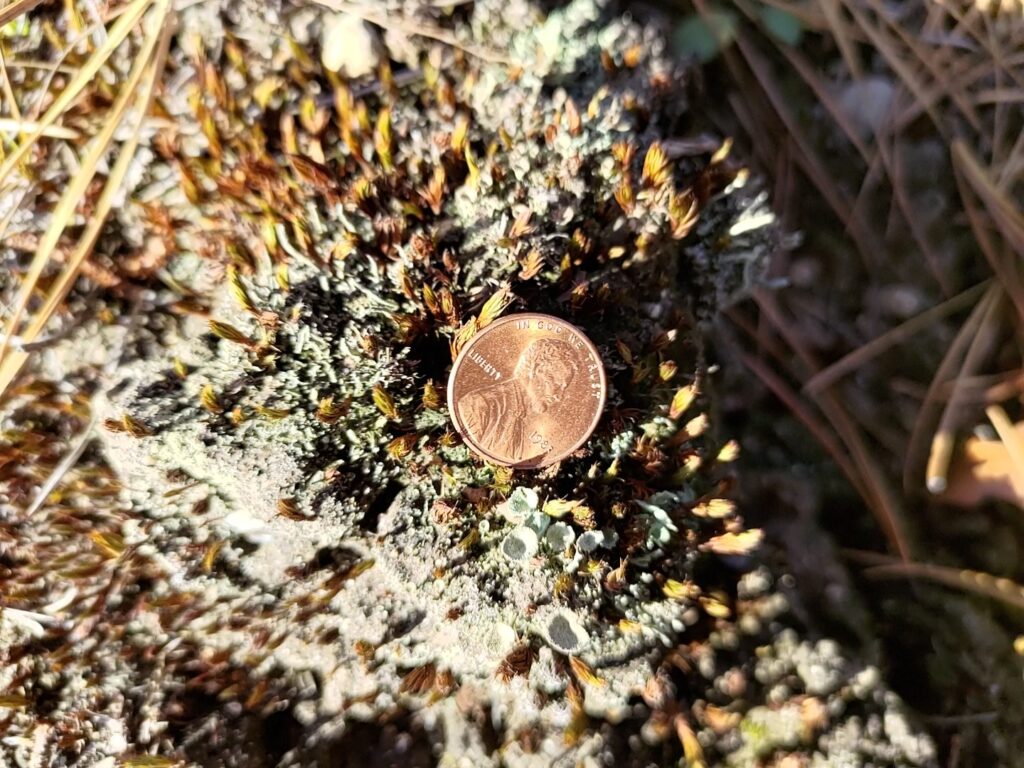
This semester, my writing students are studying lichens. Mostly not by choice, but because every semester I try to pick a different theme for my students to study and this semester seemed like a lichen kind of semester. To be fair, the students have been good sports, gamely looking at lichens and thinking deeply about how to study them.
On campus, there are lichens pretty much everywhere: on trees, rocks, buildings, light poles, benches, etc. But mostly not on the ground. Lichens get excluded anyplace where plants can grow well, so you generally only see them on very poor soil. But there are a few places in the region like that. One of them is the Montague Plains.
The Montague Plains are a delta where water from the glaciers flowed into glacial Lake Hitchcock during the last ice age. When a stream flows into a body of water, it creates a triangular (delta) shaped structure with sorted sediments: the gravel drops out first and then the sand. The silt stays suspended, but settles out on lake bed during the winter, producing varved clays. So most of the the delta is just sandy. Very sandy soil is tough for plants to grow on. It tends to be very well drained (i.e. dry) and there’s little organic matter, so few nutrients. And nothing for fungi to grow on, so few mycorrhizal relationships to help plants.
Few plants grow there. Some sparse grasses and trees, mostly pitch pine and scrub oak. Moreover, there tend be frequent fires, which end up burning off most of the organic material that might otherwise accumulate in the soil. So this is a recipe for lichens to grow. You have to look under the grass, leaves, and pine needles to find them, but they’re there.
It’s probably too far for any of the students groups to study there this semester. But I thought I’d stop by to take a few pictures to share with them anyway. Moreover, I always like visiting places with interesting geomorphology and botany to help me write fiction.